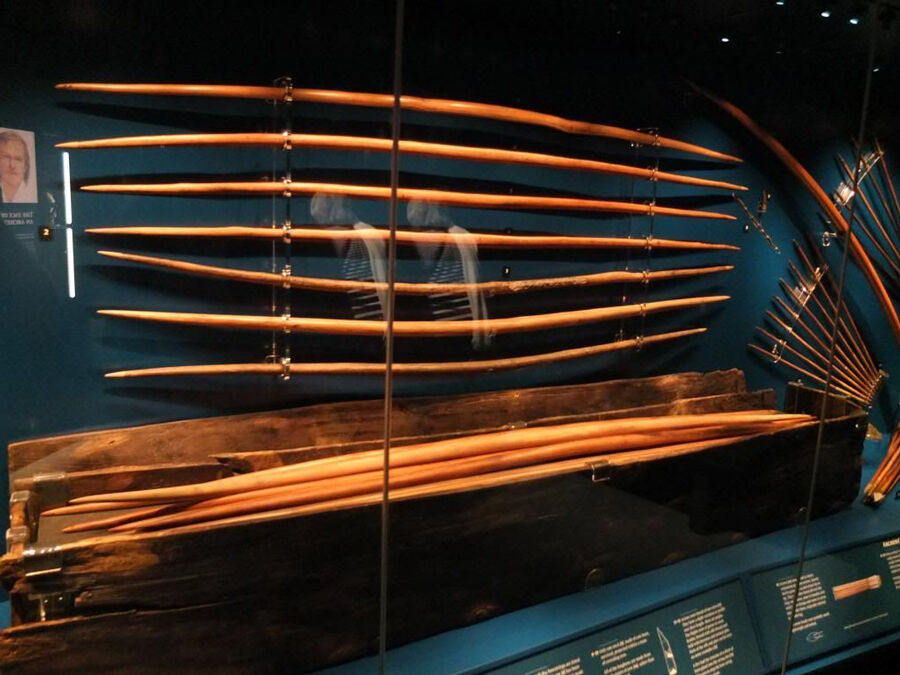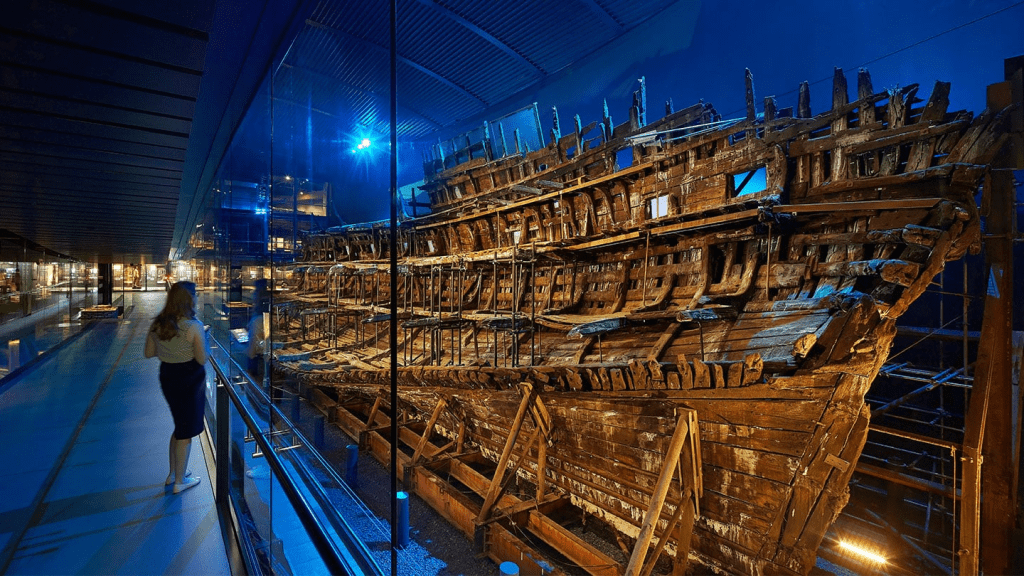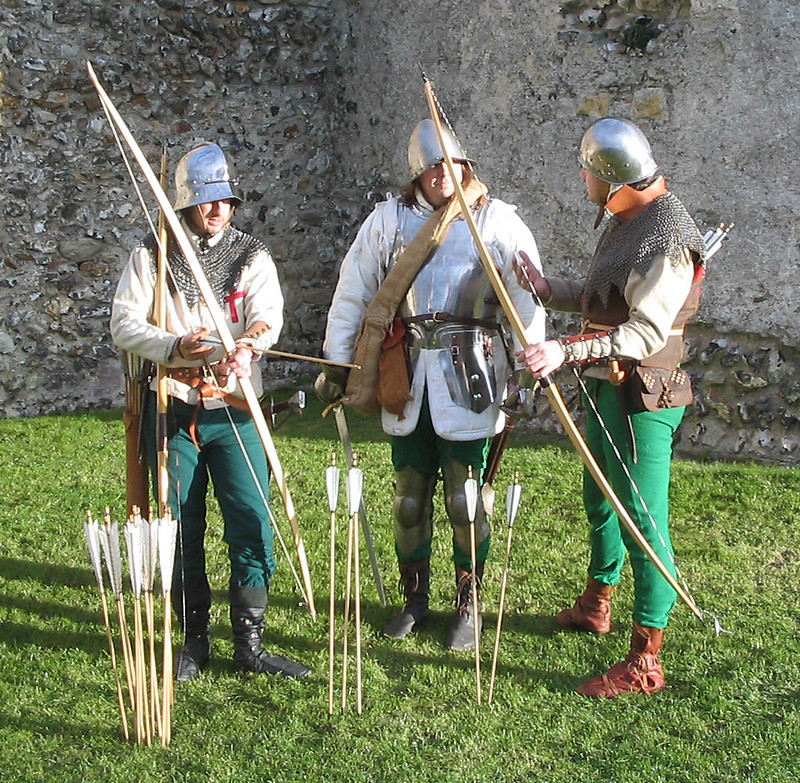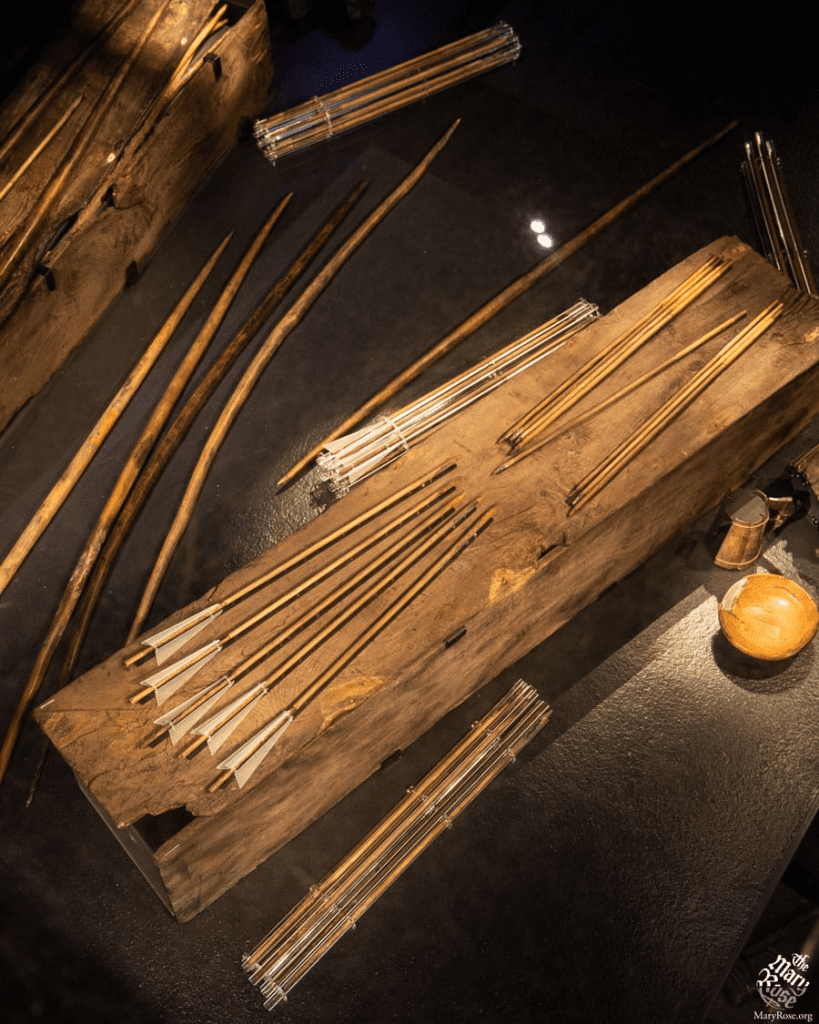In 1982, a significant archaeological find was made at the bottom of the Solent, off the coast of England the wreck of Henry VIII’s sunken warship, the Mary Rose. Among the many recovered artifacts were 137 longbows and 3,500 arrows, which would go on to rewrite our understanding of Tudor naval warfare. These six-foot weapons, capable of drawing up to 185 pounds of force, revealed the pivotal role that archery played in the naval battles of the era.

The Mary Rose and Its Historical Context
The Mary Rose, launched in 1511, was one of the most powerful ships in Henry VIII’s navy. It sank in 1545 during a battle with the French, taking hundreds of crew members with it. The ship remained lost until its rediscovery in 1982. The excavation of the wreck has provided invaluable insight into Tudor-era naval life, revealing everything from the ship’s weaponry to personal items of the crew. The longbows and arrows recovered from the ship have been particularly important in reshaping our understanding of naval warfare during the Tudor period.

The Power of the Longbow
The longbow was a formidable weapon during the Middle Ages and the Tudor era. Standing at six feet tall, these bows were powerful enough to draw up to 185 pounds of force, a level of power that could pierce armor and inflict serious damage. The longbows found aboard the Mary Rose were not just ceremonial items they were essential tools in combat.
Video:
Were the Mary Rose bows as powerful as the longbows at Agincourt?
These longbows were used by English archers stationed on board the Mary Rose during naval engagements. Archers would fire arrows at enemy ships from a distance, targeting vulnerable crew members or the ship’s rigging. The power of the longbow, capable of piercing armor, made it an effective weapon, especially when facing off against heavily armored soldiers.
The Role of the Longbow in Naval Warfare
Before the discovery of the longbows on the Mary Rose, it was unclear how important archery was in naval battles. Conventional wisdom suggested that naval warfare relied heavily on cannons and hand-to-hand combat. However, the longbows found on the Mary Rose demonstrated that archery was a central aspect of Tudor naval strategy. Archers, using their longbows, could disable enemy ships and incapacitate soldiers before close combat ensued. The longbow allowed for a level of precision that gave the English navy a distinct advantage.

Additionally, archers could target the rigging and sails of enemy ships, effectively rendering them immobile or slowing their maneuverability. This was particularly advantageous in naval battles, where the ability to disable an opponent’s ship could determine the outcome of a conflict.
Video:
Ray Mears discovers 400-Year-Old perfectly preserved Warbows Salvaged From a Sunken Tudor Warships
Conclusion: A Lasting Legacy
The discovery of the longbows and arrows from the Mary Rose provided a new understanding of Tudor naval warfare. These weapons were not only powerful but also an integral part of naval strategy during Henry VIII’s reign. The Mary Rose excavation revealed that archery was much more than just a land-based skill it was a vital component of naval combat. This finding continues to shape the way we view the military history of the Tudor period and the strategic importance of archery in shaping the outcomes of naval battles. Today, the longbows are displayed at the Mary Rose Museum in Portsmouth, allowing visitors to connect with England’s maritime history and the remarkable legacy of the Tudor navy.



